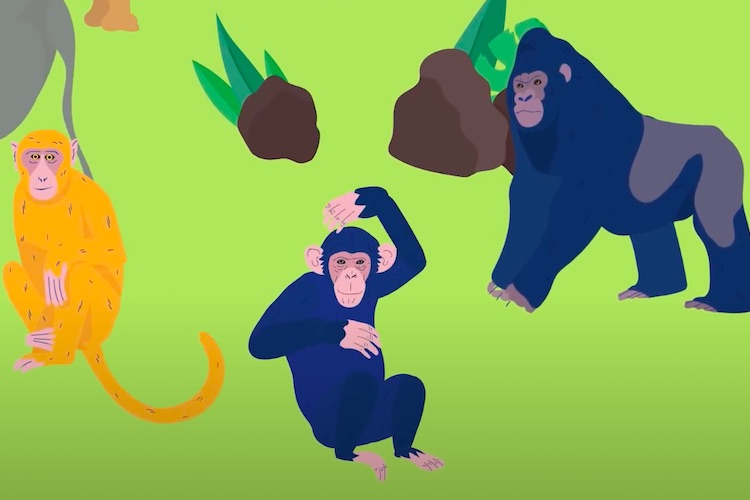Reverse Engineering in Biology
Harvard Research Scientist Leonid Peshkin on cell models, experiments in silico, and drug discovery

Published on June 16, 2015 in Scientific Reports journal, new study titled “Chimpanzees and bonobos differ in intrinsic motivation for tool use” compares tool use in our closest living relatives, chimpanzees and bonobos. We have asked the lead author of this research, Dr. Kathelijne Koops, to comment on this work.
I addressed the question: ‘What makes a tool user?’ Chimpanzees and bonobos are the two closest living relatives of the human species – the ultimate tool-using ape. Yet, despite being so closely related on the evolutionary tree, wild chimpanzees and bonobos differ hugely in the way they use tools. Chimpanzees show the most diverse range of tool use outside of humans whereas bonobos rarely use tools and never to forage for food.
I wanted to know whether the two species are intrinsically different, in terms of their innate predispositions, or whether the tool use difference may be explained by extrinsic differences, such as opportunities for tool use in the environment and learning how to use tools from others.
My findings showed that both species had plentiful opportunities for tool use and that opportunities to learn skills from others could not explain the tool use difference. However, I did find a striking difference in the predisposition, or intrinsic motivation, for tool use. Young chimpanzees engaged much more with objects than young bonobos. Given the close evolutionary relationship between these two species and humans, insights into the tool use difference between chimpanzees and bonobos can help us identify the conditions that drove the evolution of human technology. My findings suggest that an innate predisposition, or intrinsic motivation, to manipulate objects was likely also selected for in the hominin lineage and played a key role in the evolution of technology in our own lineage.
Humans are the ultimate tool-using ape. We use tools in nearly all aspects of daily life. But how did we become such technological beings? To answer this question we need information about our evolutionary past. Unfortunately, we cannot go back in time to see how our hominin ancestors lived, so we must turn to our primate cousins, the great apes, instead.
As a Masters student at the University of Utrecht and as a PhD student at the University of Cambridge, I studied chimpanzee tool use in the Nimba Mountains in Guinea, West Africa. I discovered that chimpanzee tool use is influenced by the environment and that ‘(ecological) opportunity may be the mother of invention’. For my post-doctoral research, I set out to broaden my research and investigate why tool use in chimpanzees and bonobos is so different, so I headed east to study chimpanzees in Uganda and bonobos in the Democratic Republic of Congo. I spent many months studying the apes in collaboration with researchers from the University of Kyoto.
The next step will be to include other communities of chimpanzees and investigate whether object manipulation reflects their tool use traditions. Secondly, I plan to expand the research to the other great apes: gorillas and orangutans. Such a comparative approach can help shed light on what drives tool use across the great apes and what this tells us about how we became the ultimate tool-using ape.
By studying the use of technology in our closest living relatives, I not only aim to learn more about human evolution, but also to increase awareness of our close evolutionary links with the African apes and promote the conservation of our endangered cousins.

Harvard Research Scientist Leonid Peshkin on cell models, experiments in silico, and drug discovery

Boston University Prof. James Collins on bacterial resistance, active mutagens, and efficacy of biocides

Neuroscientist Freyja Ólafsdóttir on the hippocampus, place cells, and the cognitive map